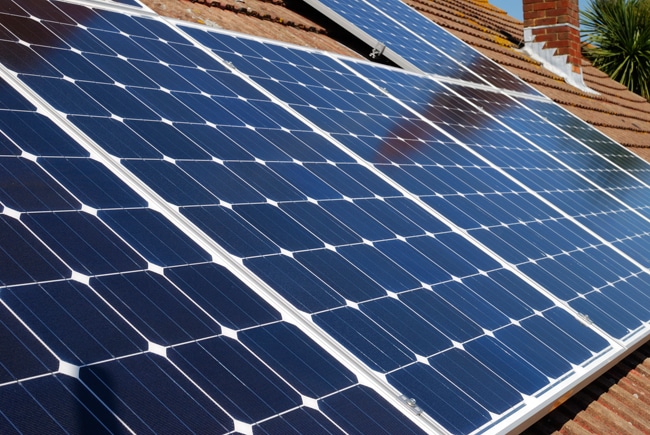Solar Roofing Installation in Gaithersburg, MD

Solar panels on your roof could deliver up to 80% of the energy you need for your entire property. That means they can provide clean energy and pay for themselves after a few years. Choose BRAX Roofing for solar roofing installation in Gaithersburg and nearby.
Our team has equipped countless homes with top-of-the-line solar panels. Our solar panel installers work closely with each client to ensure they get the number of panels they need, installed for optimal energy absorption.
We Deliver Quality
That You Can Trust
The Benefits of Solar Panels
Adding solar panels to your home can make a big difference in your life. A few advantages of installing solar panels include:
- Eco-friendly electricity: Solar power is ‘green’ energy, making it less damaging to the environment.
- Long-lasting power: Our solar panels are durable and made of the best materials, ensuring they last for many years.
- Quick installation: Our team can quickly install solar panels for your home and get them running.
- Added home value: Raise the value of your home by adding solar panels to the property.
Expert Solar Panel Installations
BRAX Roofing partners with SunPower to install some of the best solar panels on the market today. These panels feature a unique technology that maximizes energy collection while providing a beautiful look for any roof.
When you hire BRAX Roofing for solar panel installation, we’ll make sure the project goes smoothly from step one. Our team will:
- Discuss your electrical needs.
- Inspect your roof for the project.
- Schedule convenient dates for installation.
- Perform the installation and connect the panels.
Equip your home with top-tier solar panels. Contact BRAX Roofing today to request an estimate.
Why Choose Us?
For years, the licensed and insured technicians at BRAX Roofing have provided expert roofing, siding, and gutter services in the DMV area. We offer upfront prices, specials, and financing. Depend on our team to power your home with a top-grade solar panel system.
Enjoy consistent electricity without breaking the bank. Contact BRAX Roofing today to schedule a consultation for solar panel installation.
Solar Roof FAQs
What's the cost of a solar panel in Gaithersburg?
As with many roofing options, the final cost will depend on the size of your roof and the materials you select.
Does Gaithersburg get enough sunlight for solar panels?
It’s a common misconception that you have to live in an area with abundant sunshine to get the most out of your solar panels. As long as there’s some light, the solar panels are absorbing it. Therefore, Gaithersburg is a great location for solar roofs.
Can you install solar panels on any type of residence?
While BRAX Roofing can install solar panels anywhere, the installation will be most cost-effective if your roof has a low slope, south-facing exposures, and few peaks, valleys, and sides.
Deciding on solar roofing options can prove to be a major decision. It can also be difficult to understand the process, installation, and technology. As a customer-focused contractor, BRAX Roofing will guide you through the entire process. Call us today to get started.


